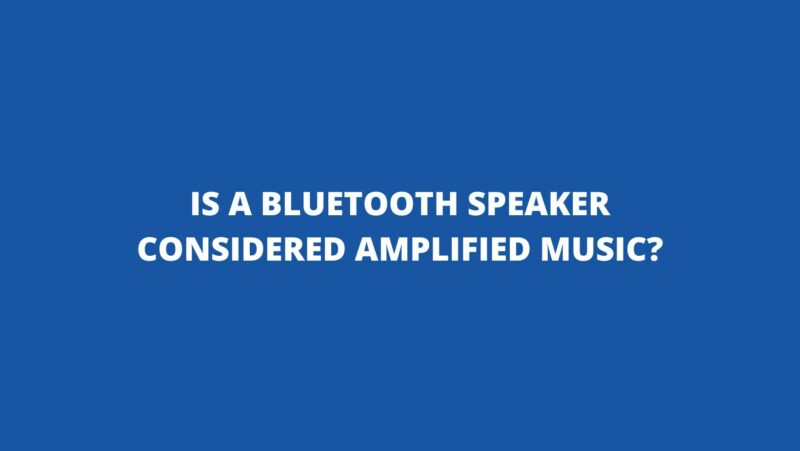In the modern era of audio technology, the landscape of musical playback has evolved dramatically, with portable devices and wireless connectivity shaping our musical experiences. A question that often arises is whether a Bluetooth speaker can be classified as a medium for amplified music. This article delves into the realms of audio quality, technical aspects, and the unique features of Bluetooth speakers to determine whether they can genuinely be considered a form of amplified music.
Defining Amplified Music: Before delving into the classification of Bluetooth speakers as a source of amplified music, it’s crucial to understand the essence of amplified music itself. Amplified music refers to audio that has been electronically boosted through an amplifier to achieve higher volume levels and improved sound projection. The purpose of amplification is to elevate the audio signal to a level that can be effectively heard in larger spaces or over ambient noise.
Understanding Bluetooth Speakers: Bluetooth speakers are portable audio devices equipped with built-in amplification and wireless connectivity capabilities. They use Bluetooth technology to wirelessly connect to audio sources like smartphones, tablets, or laptops, enabling users to play music without the need for physical connections. Bluetooth speakers are designed for convenience and portability, often featuring compact sizes and rechargeable batteries.
Is Bluetooth Speaker Audio Amplified Music? While Bluetooth speakers do have built-in amplification, classifying their audio output as amplified music requires a closer examination of certain factors:
1. Amplification Quality: The distinction between dedicated amplifiers and the amplification built into Bluetooth speakers lies in the quality of amplification. Dedicated amplifiers are engineered to provide precise, clean, and powerful amplification for various audio sources. On the other hand, Bluetooth speakers prioritize portability and versatility, which can lead to compromises in terms of amplification quality.
2. Sound Projection: Bluetooth speakers are designed for personal and small-group listening experiences. Their amplification is tailored to enhance audio in close proximity, making them suitable for indoor or small outdoor settings. In contrast, traditional amplified music systems, such as those used in concerts or public venues, are optimized for sound projection over larger areas.
3. Audio Fidelity: The audio fidelity and quality of sound produced by dedicated amplifiers surpass those of Bluetooth speakers. Dedicated amplifiers are designed to accurately reproduce audio signals without distortion or compromise. Bluetooth speakers, while convenient, might prioritize portability and wireless capabilities over audiophile-grade sound quality.
4. Portability and Convenience: Bluetooth speakers are designed to cater to on-the-go music playback. Their amplification is tailored for mobility and convenience rather than the high-performance amplification associated with traditional amplified music systems.
5. Limited Power: Bluetooth speakers have limited power capabilities compared to dedicated amplifiers used in professional audio setups. This limitation impacts their ability to project sound effectively over larger spaces.
Conclusion: In conclusion, while Bluetooth speakers do incorporate amplification into their design, they differ significantly from traditional amplified music systems. The focus of Bluetooth speakers is on portability, convenience, and personal listening experiences. While they can enhance audio playback in small environments and cater to individual needs, their amplification quality, sound projection capabilities, and overall audio fidelity are not on par with dedicated amplifiers used in professional music setups. Therefore, it can be argued that while Bluetooth speakers utilize amplification, they do not fully align with the comprehensive concept of amplified music as commonly understood in professional audio contexts.


